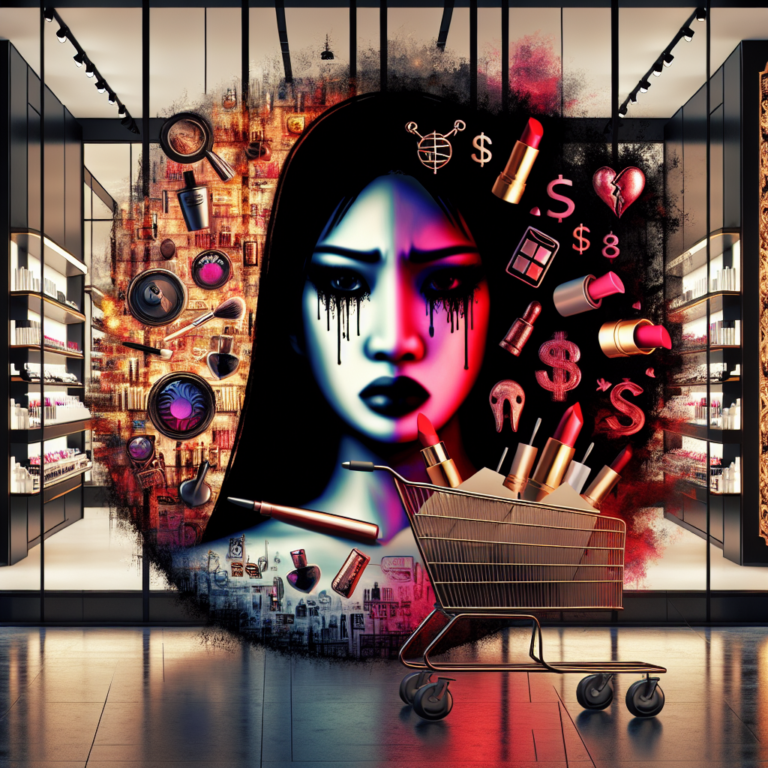
In the ever-evolving world of online beauty content, a new and unsettling trend is emerging that is designed to exploit our emotional triggers—rage baiting. This technique, akin to digital gaslighting, deliberately provokes outrage or frustration, prompting viewers to interact more with the content. The increased engagement subsequently boosts the post’s visibility through algorithms, creating a cycle that rewards controversial and manipulative tactics. While rage baiting is prevalent across various online communities, it has found a particularly fertile ground within the beauty industry—a sector already rife with competition and consumerism. Here, seemingly harmless videos can subtly persuade audiences to emulate unrealistic or wasteful beauty practices, while more extreme cases can invoke harmful stereotypes or behaviors. The result is a distorted perception of beauty norms and increased consumption driven by emotional manipulation. As consumers, it’s vital that we recognize and understand these tactics, so we can make informed decisions and resist being lured into unnecessary purchases or destructive trends. Join us as we delve deeper into the mechanisms of rage baiting in the beauty industry and empower you to navigate this digital landscape with a critical and conscious eye.
Understanding Rage Baiting in the Beauty Industry
Rage baiting, a cunning form of digital manipulation, thrives in the beauty industry. It capitalizes on our emotions, pushing buttons to rile up viewers and incite fiery engagement. Many of us have encountered it without even realizing it—videos that provoke anger or disagreement, encouraging comments, shares, and reactions. The more engagement these posts garner, the more the algorithm promotes them, creating a snowball effect.
Understated Rage Baiting
This category includes seemingly trivial acts such as mispronouncing words, making minor errors, or intentionally applying makeup incorrectly. For example, a content creator might smear foundation across their face in an unconventional manner. At first glance, it seems innocuous, even humorous if you’re in on the joke.
Here, the intent is to spark debate or disagreement over whether the creator is genuinely clueless or baiting for attention. The controversy fuels the video’s popularity, drawing in viewers who feel compelled to comment or correct the mistake.
- Deliberately misspelling beauty product names.
- Using excessive amounts of a product to showcase its ‘effectiveness’.
- Applying makeup in a way that seems counter-intuitive to traditional techniques.
Medium Rage Baiting
This level steps up the intensity, introducing wastefulness or the appearance of product misuse. Content creators may pretend to cut or destroy high-end makeup products. The viewer’s incredulity drives engagement, as they might feel compelled to comment on the perceived wastefulness or to share the video in disbelief.
For instance, a creator might cut open a tube of foundation, rendering it useless. Although the content may seem shocking, it inadvertently promotes the product by driving brand visibility and desirability—even if the product’s utility is called into question.
- Destroying perfectly good makeup products on camera.
- Faking dramatic actions, like cutting off hair, to elicit shock.
- Breaking popular products and claiming the pieces enhance functionality.
Extreme Rage Baiting
Finally, the most severe form of rage baiting perpetuates harmful, offensive, or deeply insensitive content aimed at eliciting strong emotional reactions. An egregious example would be culturally insensitive acts, such as blackface, which are both offensive and hurtful.
This level of rage baiting not only provokes outrage but can also reinforce toxic stereotypes and harmful ideologies. It crosses a line from being merely manipulative to potentially being damaging on a social level.
- Content that involves racially insensitive or harmful stereotypes.
- Videos that advocate for dangerous or unhealthy beauty practices.
- False claims about beauty products that mislead viewers.
The Impact and Response
Rage baiting can distort our understanding of beauty norms and standards. It manipulates our emotional responses to increase consumer behavior—from purchasing unnecessary products to engaging with low-value content. Many young and impressionable individuals, bombarded by these tactics, might attempt to emulate these unrealistic standards.
The key to combating rage baiting lies in awareness and conscious engagement. As consumers, we must be alert to these manipulative tactics and resist the urge to engage in ways that propagate them. Rather than fueling the fire with our comments and shares, we should critically evaluate whether engaging will serve any positive purpose.
- Recognize when content is designed to provoke anger or controversy.
- Avoid fueling the algorithm by refraining from commenting on or sharing rage-bait content.
- Support creators who produce genuine, positive content by liking and sharing their work.
- Engage in discussions that highlight the manipulative nature of rage baiting, educating others about its impact.
By understanding and calling out rage baiting, we can shift the focus back to authentic, constructive content that enhances the online beauty space. Let’s make strides towards recognizing manipulative tactics and fostering an environment where genuine engagement is valued over controversy and outrage. This way, we can contribute to a healthier, more supportive digital community.